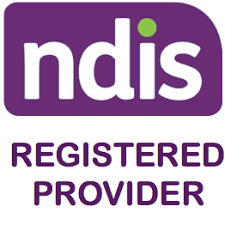Apps
Definition of Schizophrenia
According to the Diagnostic and Statistical Manual of Mental Disorders (DSM-V), schizophrenia is a severe mental illness, which alters the way a person thinks, emotes, perceives their world, communicates and interacts with others. It is characterised by abnormalities in one or more domains: delusions, hallucinations, disorganised thinking (speech, grossly disorganised or abnormal motor behaviour (including catatonia)), and negative symptoms (American Psychiatric Association, 2013).
Causes of Schizophrenia
The exact cause of schizophrenia is currently unknown. Researchers believe that the interaction between a range of risk factors may contribute to the start of the symptoms and their course (APA, 2013). These risk factors include:
- Genetic factors – if a parent has schizophrenia it increases the likelihood of the child developing the condition.
- Complications before, during and after birth – these include malnutrition, exposure to virus and toxins, premature labor or lack of oxygen during birth complications that may have impacted brain development.
- Biochemical factors - imbalance in brain chemicals that control specific circuits of the brain, including neurotransmitters called dopamine and glutamate.
- Environmental factors – substance abuse, e.g. alcohol, drugs and stressful life events can trigger schizophrenia in people who are susceptible.
Types of Schizophrenia
- Paranoid Type – this type involves hallucinations, especially auditory type and delusions, but emotions and speech remain intact. This is the most common type.
- Disorganized Type – this type is characterized by disorganized speech patterns, behaviour and thoughts. Those affected can lack emotions in their facial expressions and voice tone.
- Catatonic Type – this type is characterized by catatonia, i.e. unusual, limited and sudden movements. Person experiences catatonic excitement, i.e. excessive movement, to catatonic stupor, i.e. diminished movement.
- Undifferentiated Type – this type involves symptoms that do not fit into paranoid, catatonic or disorganised type.
- Residual Type – in this type, the person would not exhibit prominent symptoms of schizophrenia, e.g. hallucinations, delusions, disorganization and catatonic behaviour; instead, the person experiences negative symptoms, i.e. lack of concentration, poor memory, odd beliefs, and unusual perceptions.
(National Center for Biotechnology Information, 2016)
Symptoms of Schizophrenia
As discussed in the DSM-V (APA, 2013) individuals with schizophrenia may exhibit a range of symptoms that vary between individuals. They include:
Positive symptoms:
- Delusions (e.g. persecutory, referential, somatic, erotomanic, religious and grandiose)
- Hallucinations (e.g. auditory, visual, olfactory, tactile)
- Confused thinking
- Disorganised speech
- Movement disorders
- Trouble concentrating
Negative symptoms:
- Diminished emotional expression.
- Avolition (lack of self-motivated purposeful activities)
- Alogia (decreased speech output)
- Anhedonia (loss of pleasure and interest in life)
- Withdrawal from family, friends, and social activities.
- Display inappropriate affect (e.g., laughing in the absence of an appropriate stimulus)
- Dysphoric mood that can take the form of depression, anxiety or anger
- Disturbed sleep patterns (e.g., sleeping in the daytime and active at night-time)
- Lack of interest in eating or food refusal.
- Cognitive symptoms
- Difficulty with memory
- Difficulty with executive functioning
- Difficulty with theory of mind
- Difficulty with identifying salient/relevant stimuli
References
American Psychiatric Association (2013). Diagnostic and Statistical Manual of Mental Disorders (5th ed.). Arlington, VA: American Psychiatric Association.
Behaviour Help
If you are supporting an individual with this diagnosis, please refer to our services and resources. They aim to help children, adolescents and adults achieve better communication, social, emotional, behavioural and learning outcomes. So whether you are wanting guidance on parenting, teaching, supporting or providing therapy, Behaviour Help is at hand.
Note: This is not an exhaustive list of all the possible causes, symptoms and types but some general information that can be further explored. Based on what you have read if you have any concerns about an individual, please raise them with the individual/s. The caregiver can then raise these concerns with their local doctor who can provide a referral to the relevant professional (e.g. paediatrician, psychologist, psychiatrist, allied health professional and learning specialists) for diagnosis and treatment if appropriate.
Get Started with Behaviour Help App
Assess-manage-prevent behaviours of concern efficiently and effectively with the Behaviour Help App.

